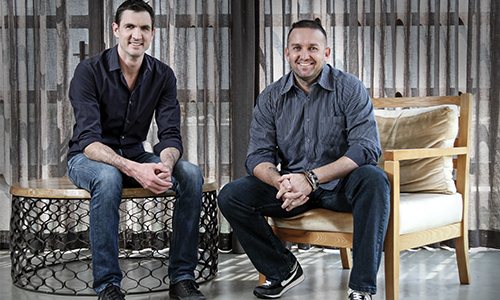“The embarrassing fact is that in companies large and small, established corporate giants as well as new start-ups, more than nine of ten new products fail. It’s true in every product category — high-tech or low, online or off, consumer or business — well-funded or not,” says the godfather of the lean start-up methodology, Steve Blank, in his seminal work The Startup Owner’s Manual.
You’re going to fail… and that’s okay
The key to long-term success is to fail early. Before spending any money on your business idea, you need to get out there and find out if there’s a market for your offering.
“The primary objective of a start-up is to validate its business model hypothesis,” says Blank.
“Searching for a business model requires a different organisation than the one used to execute a plan. Searching requires the company to be organised around a customer development team led by the founders.”
This is a rather academic way of saying: You need to talk to people and find out if they would have any interest in buying what you’re selling — and don’t just talk to your friends; they’ll be far too worried about hurting your feelings.
It really is as basic as that. The foundation of any start-up should be customer development. Find out who your potential customers are, and find out how desperate they would be to get hold of your offering.
The recipe for success is remarkably simple: You need a large number of people with a desperate itch that only you can scratch (called product/market fit).
If the fit isn’t there — which is very likely, if not inevitable — you can pivot and change your offering before you’ve spent loads of time and money
on development.
Hitting the streets
Sitting in a darkened room, fondling your ‘precious’ idea like Gollum in The Lord of the Rings won’t get you anywhere. You need to expose your idea to daylight; ask normal everyday people if they would pay money for your solution.
Admittedly, this can be an intimidating process, which is why so many entrepreneurs probably prefer to develop their ideas in isolation. Putting yourself out there can be difficult.
Entrepreneur had an opportunity to witness this process first-hand during a recent start-up boot camp. The event was hosted by Ignitor, a business accelerator that assists start-ups in finding their feet through training and coaching, and was held at Standard Bank’s Incubator in Rosebank.
It started on a Friday evening and lasted for a whole weekend. The majority of the time was spent outside Standard Bank’s Incubator, however, as the entrepreneurs approached people on the street and pitched their ideas.
Very quickly, many of the entrepreneurs found that their assumptions had been wrong. The product/market fit wasn’t there.

“A lack of product/market fit isn’t a reason to panic,” says Ignitor’s Paul Smith. “Ideas need to evolve. We find that about 90% of business ideas change drastically before launch. It’s part of the start-up process. However, you need to embrace this change before you spend too much time and money on development.”
“There is a misconception that great innovators like Steve Jobs and Richard Branson locked themselves away and eventually emerged with these fully-formed ideas,” adds Ignitor’s Justin Coetsee. “It’s not true. They were incredibly sensitive to market demands.
“Lean start-up principles have now been shaped into a cohesive methodology, but the basic tenets have been around for ages. Innovators like Branson and Jobs were instinctively applying them, but now we have a roadmap that anyone can follow.”
A sense of urgency
One of the most important principles that Ignitor employs during its boot camps is the concept of ‘time boxing’.
“Perfection is the enemy of getting things done,” says Smith. “Any idea without execution is just a dream, so if you spend too much time perfecting your idea, you run the risk of never actually moving on to the execution phase. This is why we teach entrepreneurs that ‘done’ is better than ‘perfect’. Your idea is going to change and evolve as you speak to potential customers, so tweaking it too much beforehand is a waste of time.”
This is where the idea of time-boxing comes into play.
It’s a strategy that you can employ right now. Whatever aspect of your business you are working on, put a deadline on it.
Give yourself a specific amount of time to work on it, and then move on once time is up. Even if you’re unhappy with what you’ve accomplished, move on. You can revisit the task at a later stage, but don’t get stuck on it.
You need to maintain momentum and get things done.








